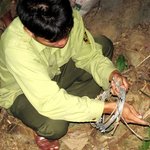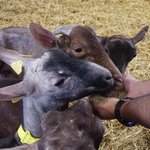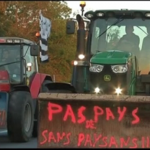The Arctic is predicted to warm faster than anywhere else in the world this century, perhaps by as much as 7°C. These rising temperatures threaten one of the largest long-term stores of carbon on land: permafrost.
Permafrost is permanently frozen soil. The generally cold temperatures in the Arctic keep soils there frozen year-on-year. Plants grow in the uppermost soil layers during the short summers and then decay into soil, which freezes when the winter snow arrives.
Over thousands of years, carbon has built up in these frozen soils, and they’re now estimated to contain twice the carbon…
European advocacy groups are getting help from avowed communists such as Rob Wallace, Marxist conspiracy theorist and author of Big Farms Make Big Flu, in their fight against science. It may be a losing battle since coronavirus shows how important science and medicine are to the modern world. Italy is at 11,591 deaths and Spain has 7,340 but that is a tiny fraction of 100 years ago during the Spanish Flu.
Groups like Greenpeace and Corporate Europe Observatory are concerned that just when they had Europe convinced it should continue to reject GMOs and more effective pesticides, consumers have…
Airplanes have a reputation for spreading germs and it makes sense when there are 150 people in a small tube with recirculating air 16 inches from each other for extended periods. But some risks are more than others. The tray table you eat on likely has more risk of disease than the bathroom.
It's a SARS-CoV-2 world so people are thinking about an increased risk for contagions in a way few did during previous recent coronavirus pandemics like SARS or MERS. A new paper tackles the problem using pedestrian dynamics.
Scientists have long used the SPED (Self Propelled Entity Dynamics) model, a…
Disease has afflicted humans ever since there have been human. Malaria and tuberculosis are thought to have ravaged Ancient Egypt more than 5,000 years ago. From 541 to 542 CE the global pandemic known as “the Plague of Justinian” is estimated to have killed 15–25% of the world’s 200-million population. Following the Spanish conquest of Mexico, the native population dropped from around 30 million in 1519 to just three million 50 years later. Today we are battling to control the COVID-19 virus which has the potential to cause the most deadly pandemic in human history.
There is, however, a…
As most people rush to distance themselves from COVID-19, Canadian researchers have been waiting eagerly to get our (gloved) hands on the hated virus.
We want to learn everything we can about how it works, how it changes and how it interacts with the human immune system, so we can test drugs that may treat it, develop vaccines and diagnostics and prevent future pandemics.
This is what researchers live to do. Much of our everyday work is incremental. It’s important and it moves the field forward, but to have a chance to contribute to fighting a pandemic is especially inspiring and exciting.…
Some around the world predict that the COVID-19 will heal divisions and narrow inequalities. A pandemic, they claim, can remind us of our common humanity and the need to discard prejudices. It can also highlight inequalities and injustices and prompt people in power to deal with them.
In Europe, some predict it will highlight the plight of people in the ‘gig economy’ who do not enjoy a guaranteed wage. In the US, there are hopes that it may make it easier for people who cannot get to polling booths to vote.
In South Africa, some hope it will prompt action against the conditions which make it…
We feel that we live in the present. When we open our eyes, we perceive the outside world as it is right now. But we are actually living slightly in the past.
It takes time for information from our eyes to reach our brain, where it is processed, analysed and ultimately integrated into consciousness. Due to this delay, the information available to our conscious experience is always outdated.
So why don’t we notice these delays, and how does the brain allow us to feel like we are experiencing the world in real time?
We’re living in the past
Consider catching a ball. It takes several dozen…
It sounds like something out of a bizarre horror movie – or from the tall tales of an 18th-century explorer. But that is exactly what Captain James Cook’s expedition found in 1775 when its members set foot on the remote subantarctic island of South Georgia. Not that the expedition’s naturalists knew about the duck’s diet at the time, simply that it was remarkable to have found a duck this far south.
What Cook had discovered is now known as the South Georgia pintail (Anas georgica georgica), a rare subspecies of pintail duck only found on this remote island in the Southern Ocean, and one that…
Despite being taken out of use in the United States and other countries, chloridazon is still common in Europe 60 years after being introduced by BASF. In America and other places, it is no longer used because it can be toxic to humans, does not break down in nature and will eventually seep into the groundwater.
Water purification plants can break down chloridazon, using UV light, but unfortunately the breakdown products of chloridazon are also toxic.
A new method using clay can solve the problem, a study finds. By creating neatly spaced slits in a clay mineral, researchers were able to …
U.S. Secretary of Agriculture Sonny Perdue is a pro-science agriculture advocate, arguing it's the best way to address climate change and sustainability without impacting poor people and those in developing nations.
What is less clear is how willing the European Union is to negotiate its 2001 biotechnology regulations at a time when courts are using those to argue that food strains created using mutagenesis, including those already considered part of the organic process, must be labeled as Genetically Modified Organisms - GMOs.
The activist group GMWatch is worried that if government chooses…
There are thousands of kinds of cheese, each with its own color, shape, nutritional value, flavor and texture.
Since cheese is made from milk, cheese types tend to vary based on the source of milk. Some of the most popular cheeses are made from the milk of cows, goats and sheep. But there are also cheeses made from camel milk, water buffalo milk – even moose milk.
To make cheese, you need to add bacteria to the milk. These create chemical reactions that cause it to change into a combination of solid “curds” and liquid “whey.” The whey is generally drained off, concentrated and dried into a…
One of the more startling discoveries arising from genomic sequencing of ancient hominin DNA is the realisation that all humans outside Africa have traces of DNA in their genomes that do not belong to our own species.
The approximately six billion people on Earth whose recent ancestry is not from Africa will have inherited between 1% and 2% of their genome from our closest but now extinct relatives: the Neanderthals. East Asians and Oceanians have also inherited a small amount of ancestry from the Denisovans, another close relative of Homo Sapiens.
Now a new study, published in Science…
Two scapulae of Homo antecessor, found during the excavation campaigns of 2005, 2006 and 2007, belonged to a boy or girl about three years old (ATD6-116), and a minor of unknown sex, and age equivalent to that of a modern adolescent (ATD6-118). It shows that this species from the European Lower Pleistocene at the Sierra de Atapuerca had already completely lost its ability to climb easily, and suggests that it had the skeleton of a hominin that habitually walked.
In the entire hominin fossil record, there are only four complete specimens of this part of the skeleton for the period between six…
On December 11th the European Commission releases its European Green Deal plan, with a vow to reduce pesticide usage by 50 percent. While that is fine for politicians, farmers are asking where the reductions can occur.
They are concerned that the Green Deal lists no "credible alternatives" to pesticides and how politicians will create "a complete overhaul" without them.
There also remains confusion about the only alternative to pesticides that might help - biotechnology. Though the science community recognizes the value of biotechnology, as does the European Court of Justice, the official…
Our new research is tracing the development of the world's vital non-living nature.
The health and wellbeing of humans is underpinned by the natural world. Living nature in the form of ecosystems and biodiversity is the world’s life support system. It is crucial, but under threat.
Equally important, but less discussed, is non-living nature or “geodiversity”. This includes rocks, soils, water and landforms. Our new research discusses how all of nature – including the non-living – must be explicitly considered in policy if a sustainable world is to be achieved.
Nature is complicated and…
Neonicotinoid pesticides, chemically similar to nicotine in the tobacco plant, which many insects do not like, are seed treatments created to protect plants when they are most vulnerable to pests. They were also designed to be better for the environment, including non-pest insects, but a statistical blip in bee numbers set off claims that the new pesticides were to blame, and scientist findings that the problem was changing land use patterns and varroa mites fell on deaf ears.
A new study affirms that scientists were right all along; at least some neonicotinoid pesticides even improve…
Hunters say that if someone new wants to begin hunting, they will take them out to get a turkey. While a human might have sympathetic notions about a rabbit or a deer, no one ever cried about killing a turkey.
That may explain why 14 eco-terrorists who invaded a farm, cost the lives of over 1,400 turkeys, and were charged with aggravated robbery, obstruction, violation of home or property degradation got away with no jail time at all. The prosecutor had requested from six months to two years jail time for the crime Boucherie abolition clearly committed but the judge instead gave them short…
For decades habitat loss has been the key threat for wildlife in tropical rainforest ecosystems but a new study finds that ground dwelling mammal and bird communities are more impacted by illegal hunting using indiscriminate snares than they are controlled logging.
The researchers conducted a large scale camera-trapping study to compare several forest areas with logging concessions in Malaysian Borneo and protected areas in the Annamites ecoregion of Vietnam and Laos known to be subjected to illegal hunting. The results show severe defaunation in snared forests compared to logged forests.…
Rice straw and waste from pruning citric fruit trees are typically burned as waste but a new paper says those could feed ruminant animals.
A team of researchers designed new diets for cows, sheep, goats, etc. from these agricultural sub-products which would help decrease burning.
Obviously it is not just rice straw and citrus leaves, but they were able to revalue those sub-products by mixing them in with other ingredients that ensure that all the nutritional needs of the animal are met.
“The Low Carbon Feed diets have added rice straw and leaves from orange and lemon trees to the compound…
Merchants of doubt in the environmental sector endlessly accuse the agricultural world of being among the key ills the world faces, and politicians latch on to such populist rhetoric in municipal elections.
Several municipalities have even issued anti-pesticide buffers in agricultural areas citing the precautionary principle.
Now, French farmers are fighting back, noting that agriculture is more friendly to the environment than ever and that concern should instead be directed toward cities and towns that continue to expand and create more pollution, while deflecting blame onto farming.…
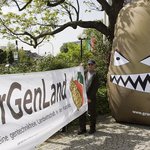

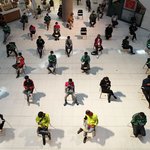
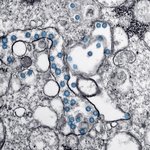

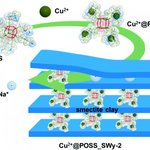
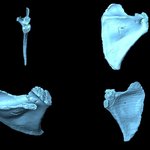

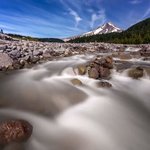
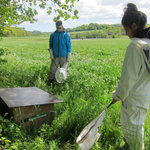
![Solveig Halloin (au centre) a été condamnée à 11 mois de prison avec sursis. [Photo d'illustration à Toulouse] - PHOTOPQR/LA DEPECHE DU MIDI/MAXPPP/THIERRY BORDAS](/sites/scieu.local/files/styles/thumbnail_square/public/2019-12/solveig-halloin.jpg?itok=fxQZuxJf)
